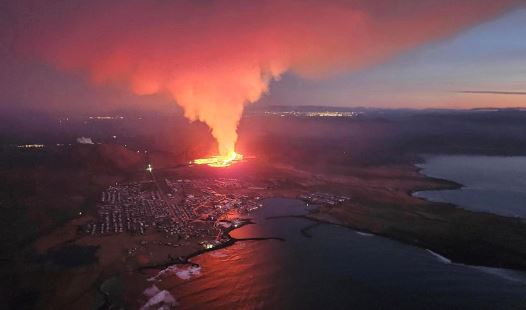Iceland’s Peninsula Witnesses Third Lava Flow from Volcano

For the third time, the Reykjanes Peninsula in Iceland has become the site of a spectacular natural event as lava began flowing from a volcano that has captured the attention of both locals and the global community. This recent eruption follows a series of geological activities in the area, underscoring Iceland’s dynamic and ever-changing landscape, shaped by its position atop one of the world’s most active volcanic hotspots.
The eruption, occurring in a region known for its geological volatility, has drawn scientists, tourists, and media alike, all eager to witness the power of nature up close. While previous lava flows in the area have ranged from awe-inspiring displays to sources of concern due to their proximity to populated areas, the current flow is primarily being monitored for its environmental impact and potential threats to infrastructure.
Iceland’s extensive experience with volcanic activity has equipped local authorities and scientists with the expertise needed to manage such events effectively. Monitoring systems in place allow for real-time tracking of seismic activity, enabling prompt alerts and ensuring the safety of residents and visitors. The country’s volcanic history has also become a significant draw for tourism, contributing to Iceland’s economy while fostering a deeper understanding of natural processes among the public.
The latest eruption on the Reykjanes Peninsula provides valuable data for researchers studying volcanic activity and its effects on the surrounding environment. It offers insights into the behavior of the Earth’s crust, the movement of tectonic plates, and the cycle of magma formation and eruption. Such events are crucial for advancing our knowledge of geological processes and improving predictive models that can help mitigate the impacts of future eruptions.
As the lava flows continue, the event serves as a reminder of the planet’s dynamic nature and the need for ongoing vigilance and respect for the forces that shape our world. Iceland’s handling of these natural occurrences exemplifies the balance between utilizing geological phenomena for education and tourism and ensuring the well-being of the environment and its inhabitants.
This third lava flow on the Reykjanes Peninsula not only highlights the beauty and power of nature but also reinforces the importance of scientific research and preparedness in the face of Earth’s ever-present geological activity.





